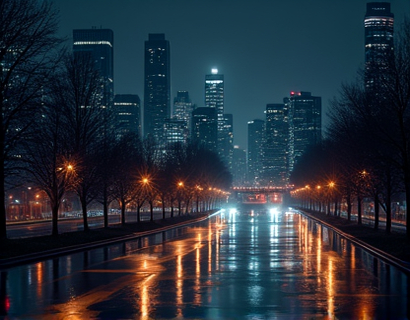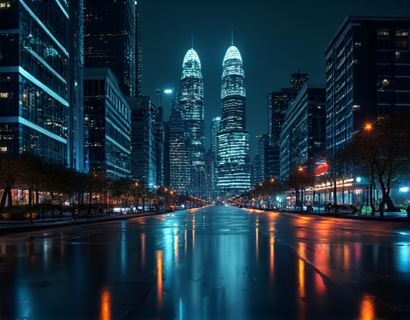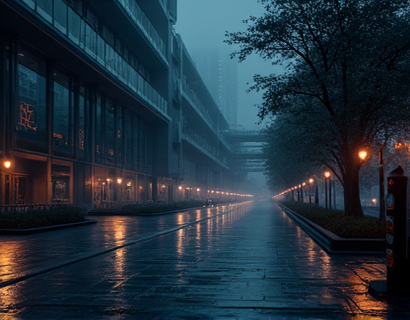Exploring the Ancient Indus Valley: A Journey Through Time
The Indus Valley, a cradle of one of the world's oldest civilizations, beckons travelers with its rich tapestry of history, culture, and natural beauty. This comprehensive guide aims to equip you with the essential knowledge and practical tips to make your journey through this ancient land both memorable and enlightening. Whether you are a history buff, a cultural enthusiast, or simply a curious traveler, this article will provide you with detailed insights, hidden gems, and local insights to enhance your experience.
Understanding the Historical Significance
The Indus Valley Civilization, dating back to around 3300 BCE, is one of the earliest urban civilizations alongside those of Mesopotamia and Egypt. Spanning across present-day Pakistan and northwestern India, this civilization thrived for over a millennium, leaving behind a legacy of sophisticated urban planning, advanced water management systems, and intricate craftsmanship. The most famous cities of this era are Harappa and Mohenjo-Daro, both of which offer a glimpse into the advanced society that once flourished here.
Visiting these ancient sites is not just about seeing ruins; it's about understanding the lives of people who lived over five thousand years ago. The cities were built with baked bricks, featuring well-planned streets, drainage systems, and public baths. The Great Bath in Mohenjo-Daro, for instance, is a testament to the civilization's advanced engineering and religious practices. Exploring these sites provides a unique opportunity to connect with the past and appreciate the foundations of modern urban life.
Must-Visit Sites
Harappa: Located in Punjab, Pakistan, Harappa is one of the largest and most important archaeological sites of the Indus Valley Civilization. The site offers a comprehensive museum and a well-preserved city layout, including the Granary, Citadel, and the unique drainage system. A guided tour here can provide deep insights into the daily life and social structure of the ancient inhabitants.
Mohenjo-Daro: Situated in Sindh, Pakistan, Mohenjo-Daro is one of the best-preserved cities of the Indus Valley Civilization. The name translates to "Mound of the Dead," but the site is far more than that. Explore the Great Bath, the Public Building, and the numerous artifacts on display. The site also offers a panoramic view of the surrounding landscape, enhancing the sense of being in a place of historical significance.
Kalibangan: In Rajasthan, India, Kalibangan is known for its early evidence of wheel-made pottery and a sophisticated drainage system. The site features a well-planned city with a citadel and a lower town, providing a comprehensive view of urban planning in the Indus Valley Civilization.
Rakhigarhi: Often overshadowed by more famous sites, Rakhigarhi in Haryana, India, is one of the largest Harappan sites. Ongoing excavations here continue to uncover new findings, making it a must-visit for those interested in the latest archaeological discoveries.
Cultural Heritage and Local Traditions
Beyond the archaeological sites, the Indus Valley region is rich in cultural heritage and living traditions. The area is home to diverse communities, each with their unique customs, languages, and crafts. Visiting local villages and interacting with the residents can provide a deeper understanding of the region's cultural fabric.
Crafts and Artisans: The Indus Valley is renowned for its traditional crafts, including pottery, block printing, and embroidery. Cities like Lahore and Multan in Pakistan, and Jaipur in India, offer markets where you can witness these crafts being made and purchase authentic items. Engaging with local artisans not only supports the community but also allows you to take home a piece of the region's cultural heritage.
Festivals and Celebrations: The region is vibrant with festivals that reflect its diverse cultural influences. The Festival of Lights, or Diwali, is widely celebrated, but other local festivals such as the Urs of Data Ganj Baksh in Lahore and the Phagwah festival in Punjab offer unique insights into the local way of life. Participating in these festivals, even as an observer, can be a profound cultural experience.
Local Cuisine
The cuisine of the Indus Valley region is a delightful blend of flavors, influenced by its history and geographical location. Traditional dishes such as biryani, kebabs, and various types of flatbreads are staples across the region. Each area has its specialties, and dining at local eateries or joining a food tour can be a highlight of your trip.
Street Food: Indulging in street food is a must when exploring the region. From spicy street snacks like pakoras and samosas to sweet treats like gulab jamun and jalebi, the flavors are both authentic and satisfying. Always ensure the food is from a reputable source to avoid any health issues.
Local Markets: Visiting local markets, such as the Lahore City Market or the Multan Sundari Market, offers a sensory experience. You can find everything from spices and textiles to handicrafts and fresh produce. Interacting with local vendors and sampling regional delicacies is an integral part of the travel experience.
Practical Tips for Travelers
Planning your trip to the Indus Valley requires some preparation to ensure a smooth and enjoyable journey. Here are some practical tips to consider:
- Best Time to Visit: The cooler months from October to March are ideal for visiting the archaeological sites, as the weather is pleasant and comfortable for exploration.
- Dress Code: Respect local customs by dressing modestly, especially when visiting religious sites. Lightweight, breathable clothing is recommended for hot weather.
- Hydration: Carry plenty of water, especially when visiting outdoor sites. Staying hydrated is crucial in the region's climate.
- Guided Tours: Consider hiring a local guide for a deeper understanding of the historical and cultural context. Guided tours can also help navigate the sites more efficiently.
- Photography: While photography is generally allowed at archaeological sites, always ask permission before taking pictures of people or restricted areas.
Hidden Gems and Off-the-Beaten-Path Destinations
While the major sites are impressive, the Indus Valley region also offers several hidden gems that are worth exploring:
Thatta: Located in Sindh, Pakistan, Thatta is a city with a rich history dating back to the Indus Valley period. The Shah Jahan Mosque, built in the 17th century, is a stunning example of Mughal architecture and is open for visitors to explore.
Derawar Fort: Also in Pakistan, Derawar Fort is a 17th-century fort known for its massive walls and strategic location in the Thar Desert. The fort offers a unique blend of history and natural beauty, making it a must-visit for history enthusiasts.
Chanhu-Daro: Another lesser-known site near Mohenjo-Daro, Chanhu-Daro provides a quieter experience with well-preserved structures and a serene atmosphere. It's an excellent place to explore without the crowds.
Naushahro Feroze: This town in Sindh is home to the Sindh Museum, which houses a vast collection of artifacts from the Indus Valley Civilization. The museum offers a comprehensive overview of the region's history and culture.
Conclusion
Exploring the Indus Valley is a journey through time, offering a unique blend of history, culture, and natural beauty. By understanding the historical significance, visiting must-see sites, immersing yourself in local traditions, and savoring the local cuisine, you can create a truly unforgettable experience. Whether you are a seasoned traveler or a first-time visitor, the Indus Valley has something to offer everyone. Embrace the adventure, respect the local culture, and let the ancient wonders of this region leave an indelible mark on your soul.










































